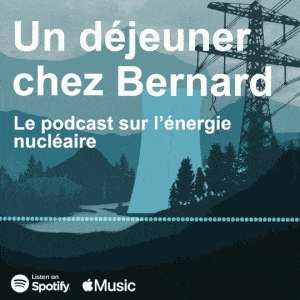In recent years, a new type of reactor has appeared on the world stage, the SMR - Small Modular Reactor. Historically, a number of "small reactors" of very different types have been in operation – small in terms of power compared with the reactors of nuclear power plants currently in operation around the world – notably for use in ship propulsion, such as the nuclear submarines of the pressurized water/enriched uranium type.
The "modular" feature of an SMR is achieved by mass production in a dedicated plant. It would then be transported to the operating site, where it would be connected to the heat or electricity production system to form a "module" and then a "power plant", known as an "SMR". The hope of SMR promoters rests on the hoped-for gain in unit reactor cost due to the series effect, as they are rightly aware that the cost of a site-built model is far too high.
At present, according to the International Atomic Energy Agency (IAEA), there are almost a hundred "candidate" SMR projects/designs, some of them based on existing prototypes ("small" but not "modular"), most of them existing only on paper, of various power ratings, from enriched uranium and pressurized water reactors, a well-known technology, to plutonium fast neutron reactors, thorium or molten salt reactors, etc. There are no existing SMRs at present.
In addition to a general presentation of the SMR issue and a selection of IAEA projects, this report examines two "SMR candidate" reactor projects in the enriched uranium and pressurized water (PWR) family of reactors : NuScale in the USA and NUWARD in France. Numerous safety-related questions remain unanswered about the NuSCale model, and the Safety Options File for the NUWARD reactor, studied by the French, Czech and Finnish safety authorities, is not yet available. The technical challenges to be met to guarantee SMR safety are not qualitatively different from those of large reactors.
These challenges are compounded by the uncertainties brought about by the reactor’s novel "compact" design, which contains the reactor core (the site of the nuclear fission reaction), the control rods, the steam generator(s) and the pressurizer in a single enclosure. The SMR gamble is not only risky in terms of the bill, but also in terms of the climate, technical and safety agendas, as well as entailing the negative externalities of nuclear installations such as the risk of nuclear accidents and the production of waste that we are relegating to future generations, at least for the next 100,000 years. These reactors also entail other risks, including proliferation.
The complete text is available here :
 Global Chance
Une expertise indépendante sur la transition énergétique depuis 1992
Global Chance
Une expertise indépendante sur la transition énergétique depuis 1992





